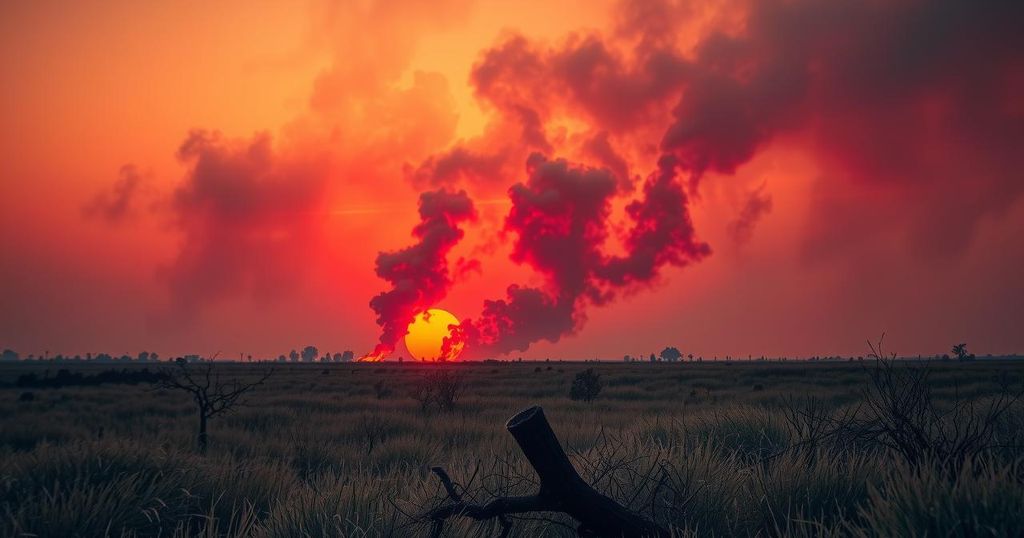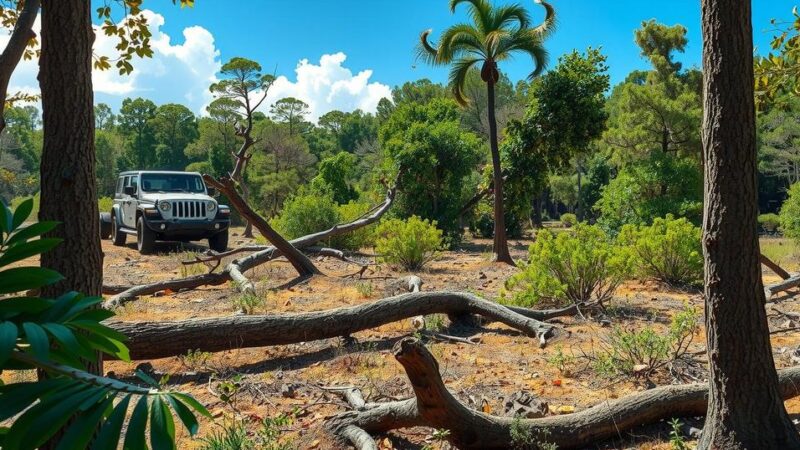Kenya is facing a surge in wildfires, with 180 incidents reported by KFS since January, destroying over 1,357 hectares in protected regions. The fire season, fueled by adverse weather conditions, is expected to last until mid-March. KFS has heightened fire danger ratings and taken measures to enhance firefighting resources while urging the public to remain vigilant.
Kenya is experiencing a significant increase in wildfires, with the Kenya Forest Service (KFS) reporting 180 incidents since January. The fires, primarily affecting protected areas such as the Maasai Mau and Mt. Kenya, have devastated over 1,357 hectares of vegetation. High temperatures, low humidity, and strong winds have triggered this fire season, which is expected to persist until mid-March.
KFS officials have expressed concern over the rapid drying of vegetation, leading to increased fire risk. The situation has worsened recently, with blazes reported in Isiolo, Garissa, and various coastal regions. In response, KFS has implemented a high fire danger rating and is collaborating with community forest associations and local authorities to combat the fires.
Preventive measures include suspending all burning of vegetation near forested areas, with a requirement for individuals to notify KFS or the police of any planned burns at least 48 hours in advance. KFS has reinforced its firefighting capabilities by deploying additional equipment and recalling staff to manage the crisis effectively.
Recent fires in Mt. Kenya have raised suspicions of arson; for instance, a blaze in Gathiuri destroyed 150 hectares, reportedly starting in two separate locations. Community practices aimed at improving grazing conditions by burning grassland have raised concerns about disrupting forest ecosystems and biodiversity.
In the Aberdare region, KFS has faced multiple fires, with officials indicating the hot weather conditions exacerbate the situation. Despite recent containment efforts, fires continue to occur due to the challenging weather. Local communities are being enlisted for support in extinguishing flames, particularly in areas such as the Lolldaiga Conservancy.
KFS remains vigilant, urging the public to report any fire sightings. Although recent incidents have been managed effectively, KFS anticipates continued high fire risks through mid-March and calls for community awareness and preparedness.
The situation in Kenya highlights the urgent need for effective wildfire management strategies as the country grapples with an increasing number of forest fires. High temperatures and dry spells pose severe risks to forest ecosystems and biodiversity. Ongoing collaboration between authorities and local communities will be crucial in mitigating future disasters and safeguarding essential vegetation.
Original Source: eastleighvoice.co.ke






